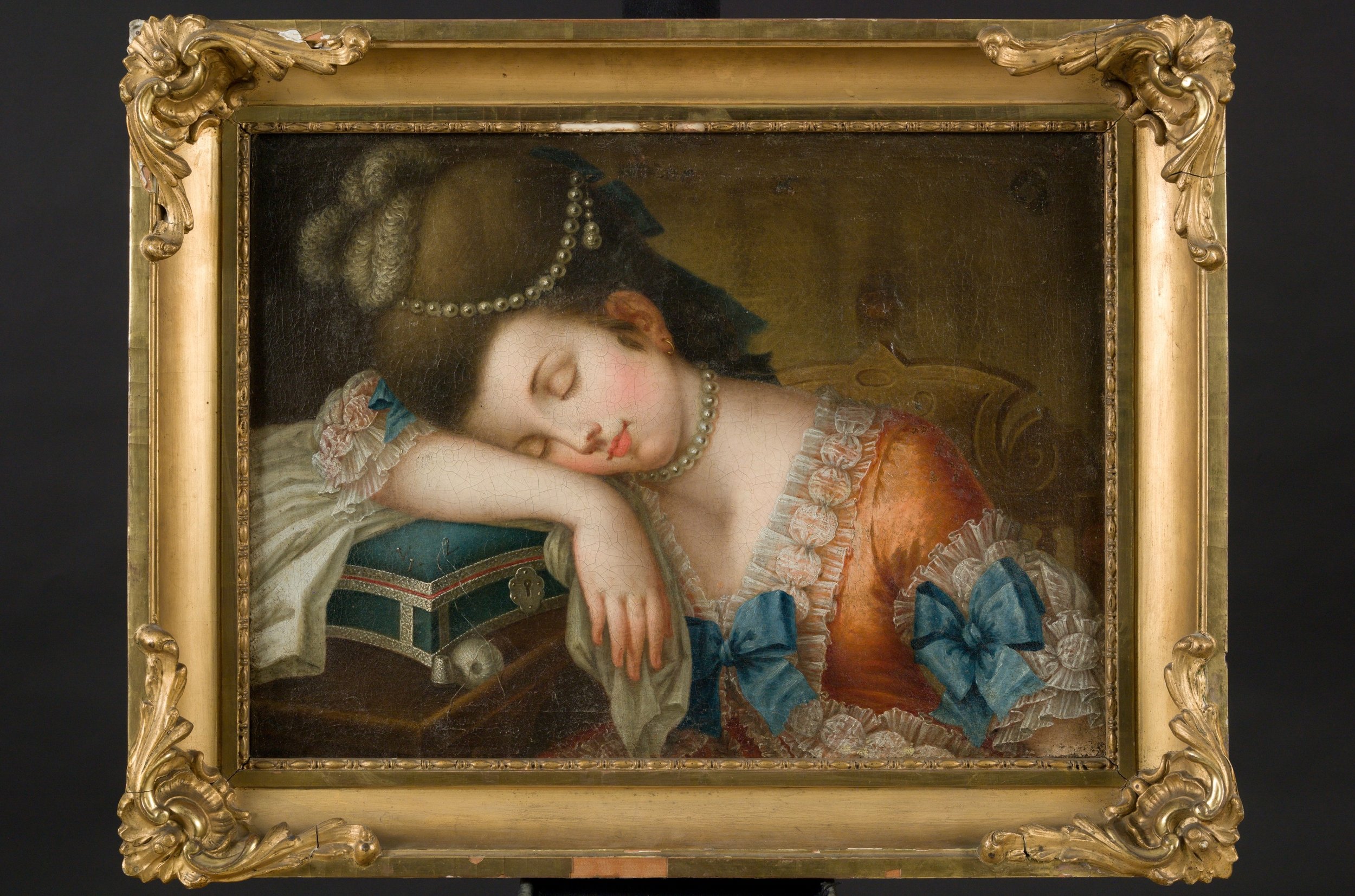18th Century Naps
Looking for a historically accurate activity you can do on your own or with a group at an 18th century living history event? Taking a nap can be done authentically with no specialized equipment, no safety orientations, and absolutely no training at all.
Napping is historically accurate for civilian and military contexts, at almost any socioeconomic level. This activity is suitable for men, women, and children at any age. You can sit in a chair, or sit under a tree – or just fall asleep on a comfortable section of the ground. If your historic site’s manager or your reenactment unit’s commanding officer has any doubts about interpretive napping at 18th century events, direct them to these illustrations.
Remember: You are not merely dozing. You are adding a level of realism that enhances the vérité of the scenario at your living history event. This is important work you are doing.
Additional Resources
A woman sleeping in a window by Melchior Brassauw, c. 1724-1757
The Sleeping Congregation by William Hogarth, 1728
The Practical Joke, c. 1740
Man asleep, leaning against a table by Louis Philippe Boitard
A man asleep with hands crossed in a chair by Louis Philippe Boitard
Man asleep in a long blue coat by Louis Philippe Boitard
The Merchant by Pierre Louis Dumesnil, c. 1750-1781
Sleepy Maid, 1756
A Scene from ‘The Careless Husband’ by Philippe Mercier
A Sleeping Girl by Pietro Rotari, 1760/1762
Study of two peasant boys by Francesco Londonio, c. 1760-1765
A sleeping woman by Paul Sandby
A young man asleep by George Lambert
The Sleeping Kitchen Maid by Peter Jakob Horemans, 1765
Study of a girl asleep by George Romney
The Curious Maids, 1768
Sitting man on a chair, asleep by Guillaume Saint, 1769
Shepherd sleeping by François Boucher
View of the Round and Devil’s Towers, Windsor Castle by Paul Sandby, c. 1770
George Morland, when a boy by Paul Sandby, c. 1770
Jefferies, Map & Printseller of St Martin’s Lane by Paul Sandby, c. 1770-1780
A young lady sleeping, c. 1770-1789
Jefferies, Map & Printseller of St Martin’s Lane by Paul Sandby, c. 1770-1780
Page Boy Asleep by Benjamin West
A sleeping boy with a hat by Balthasar Paul Ommeganck
Pretty Miss Asleep, 1771
The Sleeping Macaroni Ste—aling a Nap (the 2nd Lord Holland) by James Bretherton, 1772
A Sunday Evening, 1772
The Voluptuos Luxurious Spendthrift Macaroni from Holland in a Breathing Sweat (one of the sons of Lord Holland), 1773
The Bottle Companions, 1775
The Sleeping Beauty, c. 1775
Francis Grose asleep in a chair by Paul Sandby
A young woman sleeping (h/t Susan Holloway Scott)
Vicar and Moses by Thomas Rowlandson, c. 1785
O Tempora, O Mores!, 1787
Smithfield Sharpers, or the Countrymen Defrauded, 1787
Sleeping woman watched by a man by Thomas Rowlandson
The Doctor Overcame by Thomas Rowlandson
The Dull Husband by Thomas Rowlandson, 1789
Agreeable Companions in a Post Chaise by Thomas Rowlandson, 1789
Studying Politics, or the Bon Companions, 1790
Catch’d Napping by Isaac Cruikshank, 1794
Little Sleeper by Martin Drölling, 1795
A Nap after Dinner, 1796
Soldiers attending divine service by Thomas Rowlandson, 1798
Comforts of Bath: The Music Master by Thomas Rowlandson, 1798
Night by Francis Wheatley, 1799
Country Characters: Vicar by Thomas Rowlandson, 1799
Three sportsmen sleeping at the table in their chairs by Thomas Rowlandson
The drunken nurse by Thomas Rowlandson
Two men asleep on a sofa by Thomas Rowlandson
Progress of Drunkenness, c. 1800
Desire, 1800
